
Wilderculture Carna – An innovative ecological restoration project.
WILDERCULTURE CARNA PROJECT
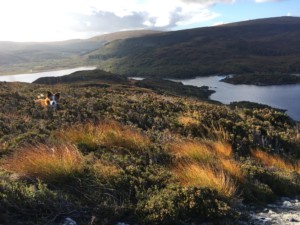
Overview
The main purpose is to implement easy and affordable management strategies on the island of Carna and asses their impact to regenerate the whole island ecosystem (including land and water). These measures are meant to be cost-effective to promote regeneration with minimal human impact with a focus on improving ecosystem processes rather than managing for specific species.
The project is also a pilot to explore techniques and systems that can be applied at scale and to inform upland landscape level projects in the future. Carna supports over 45 different classifications of vegetative community including woodland, heath, mire and salt marsh so is a superb place to study the impacts of management on successful natural succession to woodland.
The hope is to support regeneration into a dynamic wood pasture system that includes a wide range of species and habitats where natural processes lead the way and the overall energy flow and resulting biomass is highly productive.
This will be followed by monitoring and surveillance over the course of 5 years to assess the effectiveness of these measures.
- Control deer population
- Manage grazing
- Introduce horses/pigs
- Woodland regeneration
- Rhododendron clearance
- Rewilding soils
- Control deer population
Due to the selective browsing habits of deer, their presence – in the absence of predators to influence their behaviour – has a negative impact of the regeneration of trees.
When the Island has reached a higher state of succession and is more resilient, the browsing and grazing impact of the deer will become better tolerated and potentially even beneficial as long as the deer numbers are kept relatively low and in balance with other herbivores.
Currently the tree regeneration is predominantly birch and alder due to its low palatability; all rowan, oak, hazel and holly have been significantly impacted and can’t grow beyond the bracken/heather line.
Short term we intend to maintain the deer numbers (roe and red) at as close to zero as possible to allow the successful natural regeneration of the more palatable tree species.
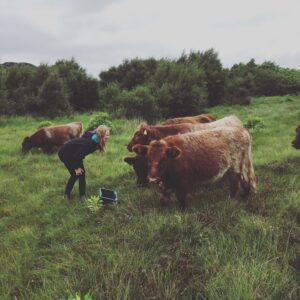
- Manage grazing
We want to recreate the ecological function that would have been achieved in natural woodlands before the time of human impact. These diverse, dynamic and resilient habitats featured large herbivores who’s grazing, browsing and animal impact benefited the processes – especially the mineral cycle and energy flow of the ecosystem.
These wood pasture habitats are likely to have included a mixture of dense woodland copses, scrub areas with young trees growing in them, and open grassland patches. The mosaic of habitats in varying successional states supports greater biodiversity than found in close canopy forest.
The act of grazing is an important ecological function. Grass plants have co-evolved with herbivores and so have not developed the means to defoliate in the way trees have. In acidic anaerobic soils there are few microbes to facilitate the process of decay and therefore plant matter build up in the non-growing season. Grazing the plant material and passing it though a herbivores gut – filled with microbes – is critical to the decay process that helps to cycle the minerals. When plants in these environments aren’t grazed, the portion of the year that the plants can photosynthesise is severely limited by the spring season regrowth being shaded out. This reduces the energy flow through the entire ecosystem and supresses overall biodiversity.
The trampling that inevitably occurs when a large ungulate grazes helps to push rank vegetation to the ground where the minerals will be released more quickly and helps the sunlight reach the growing points of plants. Where and how selectively the herbivores graze is however very different in the absence of predators to the way they would have interacted with the environment in a state of fear. We are experimenting with techniques to better mimic this important function.
The current tree regeneration on Carna is all approximately twenty years old or less, there is therefore minimal deadwood being produced from older rotting trees. An important animal Impact for the island is how large herbivores break branches while moving through and rubbing themselves on trees. The resulting deadwood provides an important food source and habitat for a wide range of invertebrates essential for a healthy and functional ecosystem.
The soil impact from heavy ungulates is also important as there are few opportunities for new seedling to germinate in the thickly thatched saturated soils. The creation of holes and divots aids this important process.
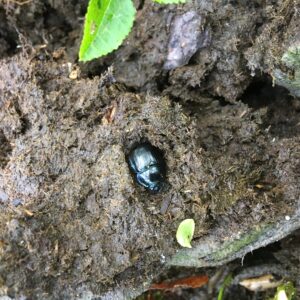
- Introduce horses/pigs
We currently have a herd of ten native hardy cattle to mimic the function of the lost Auroch and European bison on the ecosystem. It is however important to have a range of herbivores to ensure there are different sorts of impacts, grazing and browsing on a range of different species and habitats.
We would like to introduce 4-6 hardy ponies to help reduce the rank vegetation. Ponies have a digestive tract that facilitates the passing of viable seed and therefore helps to transport seed around the island. Ponies are likely to have different movement patterns to the cattle so will access areas different to those frequented by the cattle.
We would like to introduce 2-3 hardy ‘iron-age’ pigs to the island. The Island has no known moles or badgers so the important function of soil disturbance is minimal. The pigs would be closely monitored and if excessive disturbance is occurring they will be removed and only brought back for short periods in the year.
The timescale of these introductions depends on the outcome of discussions with the stakeholders – particularly the Island owners and forestry commission.
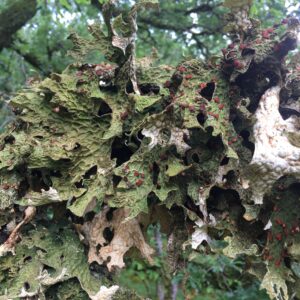
- Woodland regeneration
We want to support natural processes on the Island to help Carna regenerate naturally rather than impose tree planting or specific habitat management. We do however have a lack of certain important species – especially hawthorn and blackthorn.
In a dynamic wood pasture system the process of areas ‘scrubbing up’ with thorny species helps to create areas were no herbivores can access. These areas are an important habitat for many species, particularly small birds. The scrubby areas act as natural tree guards for palatable species to grow to a safe height/age where they can better withstand browsing.
Due to the lack of scrub species we would like to plant some small copses in suitable ground conditions. We propose not to guard the planted trees to maintain the wild and unmanaged feel of the island.
- Rhododendron clearance
Invasive Rhododendron – ongoing project using the leaver and mulch method, continue for the next five years.
We will follow up this treatment with a regular program of sapling pulling throughout the year.
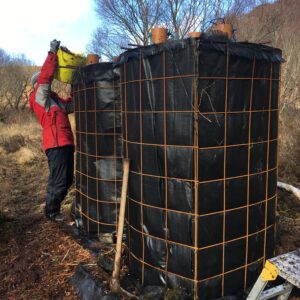
- Rewilding soils
Our understanding of soils has advanced significantly in the last decade and the application of this knowledge to rewilding and conservation projects is relatively unexplored.
We intend to test and refine techniques as well as monitor health to better understand the role soil biology plays in regeneration and natural succession.
Caroline


No Comments